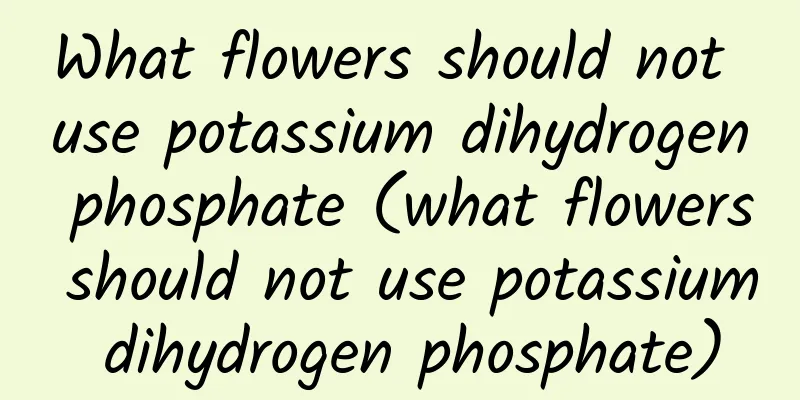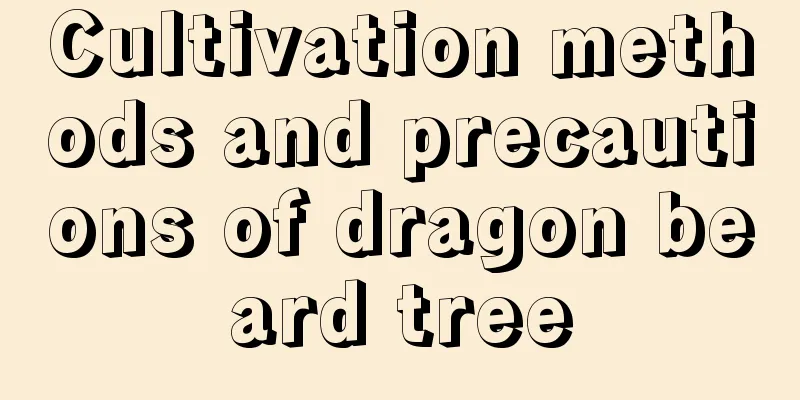What flowers should not use potassium dihydrogen phosphate (what flowers should not use potassium dihydrogen phosphate)

|
For thriving plants, flower fertilizer is like a catalyst. If applied properly, it can not only provide them with a continuous supply of fertilizer, making them become more lush and leafy, but sometimes it can also produce some unexpected effects. However, the selection conditions for flower fertilizers are relatively strict. Even the highly praised potassium dihydrogen phosphate is not a completely safe and harmless flower fertilizer. For example, according to some flower lovers, they are not suitable for alkaline plants. If used incorrectly, they may cause yellow leaves and stunted seedlings. Therefore, for the following plants, the editor believes that if potassium dihydrogen phosphate can be avoided when fertilizing, try not to use it. During this period, you can choose other types of flower fertilizers as its substitute. What should I avoid using potassium dihydrogen phosphate?The first one is the Albizia Julibrissin.Also known as the velvet flower tree, it is a deciduous tree about 4 to 15 cm tall. It blooms mostly in summer and is famous for the special shape of its flowers. This plant prefers a warm, dry and sunny environment. It is relatively resistant to barrenness and can grow normally in potting soil with normal air permeability and fertility. The tree of Albizia Julibrissin has a wide range of uses. In addition to its ornamental value, people often use the wood it produces to make furniture, sleepers and other items. The second type is the Phoenix orchid.Commonly known as pineapple flower, it is a perennial evergreen shrub of the Liliaceae family and the Yucca genus. The plant is native to eastern and southeastern North America. It generally has the characteristics of strong vitality, strong adaptability and good tolerance. It has beautiful flowers and large leaves. It is not only the national flower of Seychelles, with great and far-reaching significance, but is also one of the high-quality ornamental flowers and trees in the horticultural world. Although in principle, Phoenix orchids are highly soluble in acidity and alkalinity, as long as they are not saline-alkali soils, they can develop and grow normally without any influence. But generally speaking, the plant still prefers a neutral to alkaline environment, during which time it will grow tirelessly and bloom one after another, with an unstoppable momentum. The third type is Prunus armeniaca.The nickname of this plant is "little peach red". The plant is often named because it looks like both elm and plum. Most of the plants are not tall, 2 to 3 meters is enough. The plant is naturally light-loving and cold-resistant. As for the soil, it is best to plant it in medium-alkaline fertile soil. As a traditional plant in my country, this plant has a cultivation history of nearly a hundred years. It is widely planted in parks and flower beds in provinces and cities across the country. It has first-class ornamental value and many varieties. Among them, the most common horticultural variety is generally the pink double-petaled plum, whose sepals usually remain at around 10. The fourth type is wisteria.People usually refer to wisteria flowers from the Fabaceae family and the Wisteria genus. This plant is actually a special type of plant with strong taproots, few lateral roots, and is almost not picky about the soil. If conditions permit, it will naturally prefer loose, breathable, and well-drained alkaline soil. At the same time, avoid using too much water and fertilizer to grow flowers, otherwise the plants will easily develop problems such as yellow leaves, black rot, and root rot. |
>>: What kind of fertilizer is Huaduoduo No. 2 (the correct way to use Huaduoduo No. 2)
Recommend
The difference between Hawaiian coconut and rich coconut
1. Different leaves Hawaiian coconuts have relati...
Can herbal tea dregs be put directly into the soil to grow flowers (Can herbal tea dregs be used as fertilizer to grow flowers)
Can herbal tea residue be used to grow flowers? I...
Do sunflowers like water or drought?
Do sunflowers prefer moisture or drought? Sunflow...
How to water the green radish
Tips for watering green radish Pothos belongs to ...
How to water the lucky tree
1. Watering method In summer, the temperature is ...
How does Purple Calyx pass the winter?
1. Winter Soil This type of plant is afraid of wa...
How should we manage pumpkin plants to get more pumpkins?
As a commonly grown crop, pumpkin is deeply loved...
Best time to prune ash trees
Ash tree pruning time Ash trees should be pruned ...
How to make green radish grow faster
1. Don’t use too much light The green radish need...
The efficacy and function of blueberries
The efficacy and function of blueberries 1. Prote...
Is it okay to grow orchids with only granular soil? Can orchids be grown in peat soil?
1. Is it okay to grow orchids with only granular ...
How to grow blue snow flower? How to prune?
The blue snow flower is loved for its lush flower...
How to propagate asparagus fern by cuttings?
Asparagus fern , also known as cloud pine, is nam...
Is Chlorophytum suitable for indoor cultivation?
It is better to keep spider plants at home, and i...
What are the cultivation methods and precautions of cactus?
Cactus cultivation method Cactus is a plant of th...









